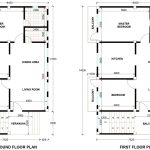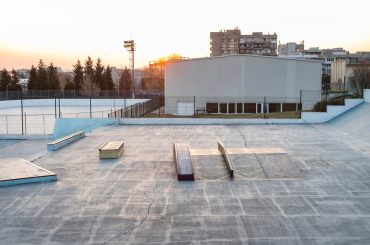A concrete block is a building material that is used to build walls. It is a pre-cast concrete product that is used in the construction industry. Pre-cast means that the blocks are made and hardened before they are brought to the construction site. Concrete blocks are standard-sized regular blocks that are used to make walls. They are also known as “Concrete Masonry Units (CMU).” These blocks usually have one or more cavities and their sides may be smooth or may have a certain design. There are different types of concrete blocks available in the market.
Concrete blocks are made in plants that specialize in the manufacture of such blocks. Some of these plants are automatic while others are manual. Manually operated concrete block-making machines can be installed at the project site itself. With manual machines at the site, the transportation charges for the concrete blocks are. Concrete blocks are manufactured in four steps:
Selection and Proportion
Concrete blocks are made up of fine and coarse aggregates, cement, and water. The ingredients are firstly selected according to the requirement which will give the desired strength to the concrete blocks. The careful grading of aggregates will depend upon the strength, texture, and economy of concrete blocks. Aggregates used in the making of concrete blocks include crushed stones, gravel, furnace clinker, etc. which are selected depending on the weight, texture, and composition of the unit desired. The cement that is used for making such blocks is ordinary Portland cement and the water Is normal potable water.
Mixing
Once the selection and carefully matched proportion of the material is done, the second step is to mix all these materials together. The mixture of water, cement, and aggregates should be done in a proper way and it is better to mix these ingredients in a mechanical mixer. If mixed using a hand, one should be extremely careful while doing so.
Molding
After the mixture is made properly, the concrete mix is poured into the mold box up to the top level. Filling the box up to the top level is compulsory. The vibration of concrete is done inside the mold box until the concrete has finally settled in the box uniformly. The excess concrete is removed from the face of the mold box and leveled by using plywood. For general construction purposes, the concrete mixture for concrete blocks contains a higher percentage of sand and a lower percentage of gravel and water. This produces a very dry, hard, and stiff mixture that has no problem holding its shape when it is removed from the mold block.
Curing
After the block is cast, it is watered for about one day. The curing process is done for a minimum of seven days and a maximum of twenty-eight days. The longer the concrete blocks are cured, the better will be the quality of the block.
Different types of concrete blocks
There are different types of concrete blocks available in the market today. Concrete blocks are generally divided into seven categories which are as follows-
Solid Concrete Blocks
These concrete blocks are heavy in weight and have a solid appearance. These blocks are made using dense aggregates, are very strong, and help make the structure very stable. Hence they are preferably used in load-bearing walls. The sizes of these blocks are also much larger than the sizes of bricks and hence construction using such blocks takes very little time. Solid concrete blocks are very similar to concrete bricks but are costlier and heavier in comparison to bricks. That is why they can withstand more forces than bricks.
Hollow Concrete Blocks

These concrete blocks contain voids that are greater than 25% of their entire area. The solid area of the brick should be more than 50. They are made using lightweight aggregates and hence are very lightweight. They are also very easy to install and the voids are filled with lightweight mortar as well while making a structure.
There are a total of eight types of hollow concrete blocks which are:
Stretcher Block
Corner Block
Pillar Block
Jamb Block
Partition Block
Lintel Block
Frogged Brick Block
Bull Nose Block
Aerated Autoclaved Concrete Block (AAC)
These types of concrete blocks are usually compared with bricks and are very different in a lot of ways. These concrete blocks are larger and lighter versions of bricks. They are usually made using the same ingredients as bricks but with a different composition. Due to this, these blocks are way cheaper than bricks. According to recent studies, these blocks have helped reduce the overall steel and concrete consumption by 15% and 10%. These blocks also, take less construction time in comparison to bricks, are fire resistant, and can adapt to various surfaces well.
Concrete Bricks
Concrete bricks are mainly small blocks that are rectangular in shape and arranged together to create a rigid wall. These bricks are usually made of cooked clay or concrete. Some use only concrete to manufacture such bricks while others play with the cement and aggregate ratio for cost-cutting purposes. These bricks are usually used in facades, and fencing as they are lightweight and give a very slick look.

Paving Blocks
These blocks are just rectangular or square blocks that are manufactured using reinforced concrete. They are mostly used for paving purposes and must be painted with high-visibility concrete paints so that people using vehicles can easily notice the blocks. Also, these blocks must be strong and rigid enough as they must be able to withstand vehicular and passenger weight.

These were the different types of concrete blocks that are usually used today.
Advantages and disadvantages of concrete blocks
Advantages
- Concrete blocks are more fire resistant and provide better thermal insulation and sound absorption in comparison to bricks.
- Concrete blocks save the land of farmers and are usually used for brick manufacturing plants.
- The making of concrete blocks takes less time, is easier, faster, and is stronger in comparison to bricks.
- The perfect shape of the concrete blocks makes the masonry work very simple.
- Plastering is not needed really in concrete blocks.
- Concrete blocks are very environmentally friendly in comparison to bricks.
Disadvantages
- Wider and larger cracks occur in structures made using concrete blocks in comparison to bricks.
- Sometimes shrinkage occurs due to the movement of moisture in concrete blocks.
- Plumbing issues arise in concrete blocks in comparison to bricks.
Conclusion
Concrete blocks are slowly being used heavily and they are in fact replacing bricks and steel structures. Once we can overcome the disadvantages, it is not very far that concrete bricks will be used everywhere as they are a cheaper and more environmentally friendly option.






